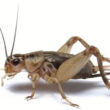Nothing ruins a beautiful lawn quite like those annoying tunnel ridges and dirt mounds that moles leave behind. If you’re dealing with these underground pests tearing up your yard, you’re not alone. Getting rid of moles in your yard can feel overwhelming, but the good news is there are many proven methods that actually work.
Before diving into solutions, it’s important to make sure you’re dealing with moles and not other pests. Moles create raised ridges and volcano-shaped dirt mounds, while voles leave small surface holes and gophers make fan-shaped mounds. Knowing which pest you have helps you pick the right treatment.
This article covers some of the most effective methods for getting rid of moles in your yard, from simple prevention tactics to professional solutions. Some work better than others, and the best approach often combines multiple methods.
1. Remove Their Food Source Through Grub Control
One of the smartest ways to start getting rid of moles in your yard is to take away their favorite meals. Moles love to munch on grubs, earthworms, and other bugs living in your soil. No food means no reason for moles to stick around.
Try beneficial nematodes or milky spore to kill grubs without harsh chemicals. These natural solutions are safe around kids and pets. Milky spore takes a few seasons to become fully effective, but it provides long-term grub control. For faster results, consider chemical grub control products. Apply these according to package directions, usually in late spring or early summer when grubs are young and easier to kill.
While grub control helps, it’s not a magic bullet. Moles also eat earthworms and other soil creatures, so they might stick around even after you eliminate grubs. Think of this as one part of your overall mole control plan.
2. Use Castor Oil Based Repellents
Castor oil works because it upsets moles’ digestive systems and makes your lawn taste terrible to them. This method won’t kill moles, but it encourages them to find somewhere else to live.
You can make your own castor oil repellent by mixing three parts castor oil with one part dish soap. Add four tablespoons of this mixture to a gallon of water. Spray or pour this solution into mole tunnels and around problem areas. Commercial castor oil repellents come in both liquid and granular forms. Liquid versions connect to your garden hose for easy application. Granular repellents get sprinkled on the ground and activated with water.
After applying castor oil repellent, water the area for about 20 minutes to push the solution deep into the soil where moles travel. Reapply monthly during active mole season to maintain effectiveness.
3. Install Physical Underground Barriers
Sometimes the best defense is a good fence, even if it’s underground. Physical barriers stop moles from entering specific areas like vegetable gardens or prized flower beds.
Use 36-inch wide aluminum sheeting or quarter-inch mesh galvanized hardware cloth. Regular chicken wire won’t work because the holes are too big and moles can squeeze through. Dig a trench and bury the barrier 24 to 30 inches deep, leaving 6 inches sticking up above ground. Bend the bottom 3 inches outward to prevent moles from digging underneath.
This method works best for small, high-value areas since it requires a lot of digging and materials. Some companies make specialized anti-mole netting that can protect areas for 30 years or more.
4. Set Harpoon Traps
Many experts agree that trapping is the most reliable way to eliminate moles. Harpoon traps are often recommended for beginners because they’re relatively easy to use and widely available at hardware stores.
These traps use sharp spikes that pierce moles as they travel through tunnels. When a mole pushes against the trigger, the spikes shoot down into the tunnel. Find an active tunnel by gently pressing down on raised ridges and checking the next day to see if they’ve been repaired. Flatten a small section of the tunnel with the side of your hand. Place the trap over this spot and push the legs into the soil until the trigger touches the flattened area.
Spring and fall work best for trapping because moles stay closer to the surface during these seasons. In winter and summer, they often move to deeper tunnels that are harder to reach.
5. Deploy Scissor Jaw Traps
- Heavy-duty galvanized steel traps for moles, voles, and gophers
- Quick & easy setup with strong scissor-style trigger
- Reusable and chemical-free — no poisons or bait needed
- Fast-acting solution to protect lawns, gardens, and fields
Scissor traps work differently than harpoon traps but can be just as effective when set properly. These traps use a scissor-like mechanism that snaps shut when triggered. The trap has two metal jaws that close like scissors when a mole disturbs the trigger. This creates a quick, humane kill.
Locate an active tunnel and carefully dig out a small section. Create a firm soil barrier just below where the trigger will sit. Position the jaws so they straddle the tunnel without blocking the mole’s path. If the jaws get in the way, moles will simply dig around the trap.
Always wear gloves when handling any type of trap. Mark trap locations with flags so you don’t accidentally hit them with your lawnmower.
6. Use Choker Loop Traps
Choker loop traps catch moles around the neck as they travel through tunnels. These traps require more skill to set up correctly but can be very effective. Wire loops sit in the tunnel pathway. When a mole pushes through, the loops tighten around the mole’s body.
Dig out a section of tunnel and place the loops so they encircle the burrow at least one inch below the original tunnel level. The loops need to be positioned just right or moles will avoid them entirely. These traps are more complicated to set than harpoon traps, but some people find them less conspicuous in the yard. Like all traps, check them daily and move them if you don’t catch anything within three days.
7. Apply Poison Baits That Look Like Worms
Traditional poison baits don’t work on moles because these pests don’t eat seeds or grain. However, newer baits shaped like worms can be effective. Products like Talpirid and Tomcat Mole Killer are designed to look, smell, and taste like earthworms. They contain an active ingredient called Bromethalin that kills moles within 12 to 24 hours.
Place these baits in active main runways, not just any tunnel. Look for straight tunnels that connect mounds or follow property lines. These are the highways that moles use regularly. Forget about poison peanuts or grain-based baits. Moles are insect eaters, not vegetarians. They simply won’t touch plant-based poisons, which is why many people think poison doesn’t work for mole control.
8. Reduce Soil Moisture and Attractiveness
Making your yard less appealing to moles can help prevent future invasions. Since moles prefer soft, moist soil that’s easy to dig through, adjusting your watering habits can make a difference.
Avoid overwatering your lawn. Most grass only needs about one inch of water per week from rain or irrigation. Moles love damp earth because it’s easier to tunnel through and attracts more earthworms. Moles prefer sandy loam soils over heavy clay. While you can’t completely change your soil type, keeping it on the drier side makes it less attractive to these pests.
Here’s the catch: well-maintained, healthy lawns with good soil actually attract more moles because they support more insects and worms. It’s a bit of a balancing act between lawn health and mole prevention.
9. Try Ultrasonic or Sonic Repellent Devices
No products found.
These electronic devices claim to repel moles using sound waves or vibrations. While popular, their effectiveness is questionable according to research. Ultrasonic devices emit high-frequency sounds every 30 seconds that are meant to irritate moles and drive them away. Solar-powered versions are available for eco-friendly operation.
Scientific studies show mixed results at best. Some research suggests moles become accustomed to the sounds over time. Since moles rely more on touch and vibration than hearing, these devices may not bother them as much as advertised.
If you want to try ultrasonic devices, use them along with other methods rather than relying on them alone. They typically cover 5,000 to 7,500 square feet, so you’d need multiple units for larger yards.
10. Create Live Capture Systems
For those who prefer not to kill moles, live trapping allows you to relocate them away from your property. The simple bucket method involves burying a 2 to 5-gallon bucket in an active tunnel with the rim level with the tunnel bottom. Cover the area with a board. Moles fall into the bucket as they travel through their tunnel system.
Commercial live traps use plastic tubes with swing doors at both ends that allow moles to enter but not exit. Add cut-up earthworms as bait to increase your chances of success.
If you catch a mole alive, take it at least 5 miles away before releasing it. Check local laws first, as some areas prohibit relocating wildlife. Remember that released moles often struggle to survive in unfamiliar territory.
11. Apply Natural Plant Based Deterrents
Some plants and natural substances may help repel moles, though the evidence is mostly based on experience rather than scientific studies. Daffodils, narcissus, crown imperial, and marigolds are commonly mentioned as mole-repelling plants. While their effectiveness isn’t proven, they add beauty to your garden and might provide some protection.
Some homeowners report success with a vinegar spray made from one part vinegar to three parts water. Spray this mixture into tunnels and reapply every few days. Be careful around plants since vinegar can damage vegetation.
Don’t expect plant-based deterrents to solve major mole problems on their own. Think of them as potential helpers in your overall getting rid of moles in your yard strategy.
12. Hire Professional Mole Control Services
When DIY methods aren’t working or you’re dealing with a severe infestation, professional help might be your best option. Consider professional services if you’ve tried multiple methods without success, have extensive mole damage, or aren’t comfortable setting traps yourself. Professionals have specialized training and access to more effective tools.
Licensed pest control technicians can assess your specific situation and create custom treatment plans. They often use a combination of baiting and trapping programs and typically guarantee their work.
Professional mole control usually costs between $80 and $130, though prices vary by location and severity of the problem. Some companies charge per mole caught rather than a flat fee. Many provide warranties of three months or more.
Methods To Avoid
Save yourself time and money by skipping these ineffective approaches that get mentioned all over the internet.
Old Wives’ Tales: Mothballs, human hair, chewing gum, and razor blades placed in tunnels don’t work. Neither do noise makers, broken glass, bleaches, or windmills. These might seem logical, but moles simply ignore or work around them.
Wrong Types of Poison: Poison peanuts and grain-based baits are useless against moles. Remember, moles eat bugs and worms, not seeds or nuts. Don’t waste money on rodent baits marketed for moles.
Why These Methods Persist: These ineffective methods stick around because people want simple solutions. Unfortunately, getting rid of moles in your yard requires more targeted approaches based on understanding mole behavior.
Identifying Active Tunnels for Better Results
Success with most mole control methods depends on finding the tunnels that moles actually use regularly.
Testing Techniques: Gently press down on tunnel ridges with your foot or poke holes with a stick. Check these spots the next day. If the tunnel has been repaired or the holes are filled in, you’ve found an active route.
Types of Tunnels: Moles create both surface feeding tunnels and deeper travel routes. Surface tunnels are the raised ridges you see in your lawn. Deep runways are 12 to 18 inches underground and connect to the volcano-shaped mounds.
Best Tunnel Locations: Focus on straight tunnels that connect mounds, follow fence lines, or run along sidewalks and driveways. These main highways get the most mole traffic and are your best bet for successful trapping or baiting.
Timing Your Mole Control Efforts
Knowing when moles are most active helps you plan your control efforts for maximum effectiveness.
Best Seasons: Spring and fall are ideal times for most mole control methods. During these seasons, moles stay closer to the surface where they’re easier to trap and bait.
Weather Considerations: Moles are most active during warm, wet weather when earthworms and insects are abundant near the surface. Dry conditions push moles deeper underground where they’re harder to reach.
Pre-Treatment Prep: Water your lawn before setting traps during dry periods. This encourages moles to use their surface tunnels, improving your chances of success with any getting rid of moles in your yard method you choose.
Repairing Mole Damage After Success
Once you’ve eliminated your mole problem, you’ll need to fix the damage they left behind.
Immediate Repairs: Flatten all visible tunnel ridges by walking on them or using a lawn roller. Fill in holes and mounds with topsoil, then seed or lay new sod over bare spots.
Preventing Reinfestation: Collapse and fill all tunnel systems you can find. This discourages new moles from moving into existing tunnel networks. Address soft spots in your lawn that might indicate hidden tunnels.
Long-Term Recovery: Be patient with grass recovery. It may take several weeks for new seed to establish or sod to take root. Keep repaired areas well-watered but not soggy.



